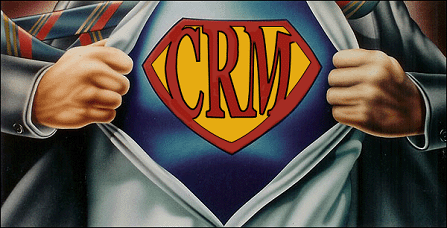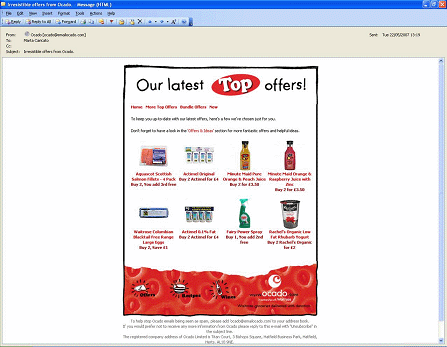When genuine passion moves you, say what you've got to say, and say it hot. - D.H. Lawrence
Who doesn't want to be the one at the party, telling the story nobody can resist?
Even better, how about telling the story you know everybody will repeat tomorrow?
It's a great feeling, when it happens.
And I've just started reading a book that might help you make sure it happens more often.
It's called "Made to Stick," by brothers Chip and Dan Heath. I must have missed it the first time around. It came out in 2007.
But already, as I read, I'm thinking... wow, imagine how many people I could have protected from boring storytelling (mostly mine) in the time since.
Even more, though, I see huge parallels in the book that work for us, as copywriters.
Let me show you what I mean...
WHAT IT MEANS TO "MAKE IT STICK"
When the Heath's talk "stickiness," they're talking about those messages that people can't resist repeating.
You know them.
In fact, the book itself starts with one -- an urban legend about the guy who wakes up in a tub full of ice, one kidney short, after a bad date.
Urban legends are great examples of "sticky" tales because they best get remembered and passed around, solely on the steam they pick up from those that stumble across them.
And like I said, wouldn't you want to tell a story -- or better, write an ad -- that could do that?
Of course you would.
"Stickiness" in itself won't make you rich, of course. But the nature of a sticky tale or marketing message is not just that it gets passed around, but also that readers WANT to pass it around because it instantly engages and hangs on to their imaginations.
Imagine, say the Heath brothers, hearing the story about the guy who wakes up in the tub of ice. He sees a cell phone and a note telling him to call 911. "Stay calm," says the 911 operator, "we've seen this before -- one of your organs has been harvested."
Not true, by the way. But what are the chances you could relate that same story to a friend, a week from today? Pretty good. And I've only given you the short version.
Compare that to a memo from the boss or an ad from a business that's jammed with nothing but charts, statistics, and multi-syllabic claims.
Instantly forgettable.
The case I'm making -- and I credit it to what I expect to find in the book -- is that the same principles that make stories and other messages "sticky" can also make
your ad copy more powerful.
In fact, let's break it down right now, right here, and see what we come up with...
SIX "STICKY" PRINCIPLES, SIX SECRETS TO GREAT ADS
Not to preempt the impact of what you'll find in the book (and I encourage you to check it out), "Made to Stick" narrows lasting message power to six characteristics.
As I read a summary of all six, I couldn't help but notice how well they matched six big secrets to writing great copy... including a few secrets you've already seen written up here before.
For instance...
GREAT MESSAGES ARE SIMPLE:
The Heaths' #1 principle is that simple messages stick best. Common sense? Absolutely. And a great parallel to what my copy colleagues and I often talk about as the "Power of One."
In short, avoid giving too many points -- even great ones -- when you can. Instead, scale back to the single most important "takeaway" message. One great insight is much easier to absorb than a dozen (or even six... ahem) very good ones.
GREAT MESSAGES SURPRISE:
"Made to Stick" calls this the value of "unexpectedness." In the world of copy, we might call it instead the value of "uniqueness." Especially as in the famous "USP" or "Unique Selling Proposition."
Why does it matter so much to make your message new? Simple. Who wants to listen to the same old tales or promises, again and again? Why stick around for details
you can get anywhere?
Every seasoned copywriter knows that curiosity can be as powerful a motivator as a big promise, especially when it's relevant to what you know you're selling.
GREAT MESSAGES FEEL REAL:
The book calls this "concreteness" and makes a great analogy that you might remember: years back, a food researcher wanted to get across that movie popcorn was full of saturated fat.
He could have made his case with graphs and charts. He could have spelled out the fat content in milligrams. But he realized that wasn't enough. So instead he compared it to eating the equivalent in Big Macs.
Those kinds of analogies are more than just colorful. They make an idea feel real, by connecting something new to something instantly personal and understandable.
I would add that it's not just the vividness that makes a message stick, but also what we teach in copy workshops as "specificity." Details make readers soak up stories in a way generalities cannot.
GREAT MESSAGES ARE BELIEVABLE:
In sales copy, a lot of what you'll do is bend over backwards to prove your claims. Testimonials, studies, hard numbers, mainstream media quotes, photos of a bank statement or sharply contrasting "before and after" shots... there are lots of ways to do it.
And many times, it's only by making this case that you'll make your sale. But, warns the book, be careful. What you're doing isn't forcing an audience to consent to your claims.
Rather, you're putting them in a spot where they can feel like they've decided for themselves. Ask yourself, you might say, how much better would your own life be if you could do what my product claims you can do?
And maybe even, how much worse could it get if you pass up on this opportunity? And then make it real for them, by way of those proofs and similar examples.
GREAT MESSAGES GET YOU WORKED UP:
Why do fundraising letters always start out with a personal story? Because the more they mail out those requests, the more they realize: you get more money when you make it personal.
Statistics on how many people died in the earthquake in Haiti or how many buildings fell might make your eyes pops. But it's the story about a little girl who lost her mother that gets people to open checkbooks.
That's because we're programmed to get emotional when messages hit closer to home -- suddenly we're not talking vague millions, but your neighbor, your daughter, your friend, your wife. We can see that. More importantly, we can feel it.
Every kind of copy message works the same way. Tap emotions first and fast, get personal -- it's the only way to get doors to open consistently.
GREAT MESSAGES USE STORIES:
This might be the most instinctive "stickiness" secret of all. Like so many books in this vein, "Made to Stick" opens first with a string of stories, each of them proving the point better than the last.
There's no fighting it -- and no reason to fight it, either -- people love a good story. Why? Because there's no better, more painless way to package a message.
Stories seep into your conscious like good pop songs; with riffs and hooks that catch, and strings of notes you're hard-pressed to forget. Stories flow automatically.
They give your imagination a backdrop. And a map to follow, so you can tell yourself and others the same story -- and message -- over and over again.
Does every great message have to be built around a great story? No. But it doesn't hurt to have the story that tells it all, waiting in your arsenal.
I'm sure I'll come back with more from "Made to Stick" as I get into it. Already, in fact, I've got a few more CR issue ideas percolating along those lines.
'til then, be sure to get a copy and check it out for yourself. I've already added it to my list of "recommended reads" on the Copywriter's Roundtable website:
http://copywritersroundtable.com/further-reading
Contributed by John Forde
Guest Contributor



